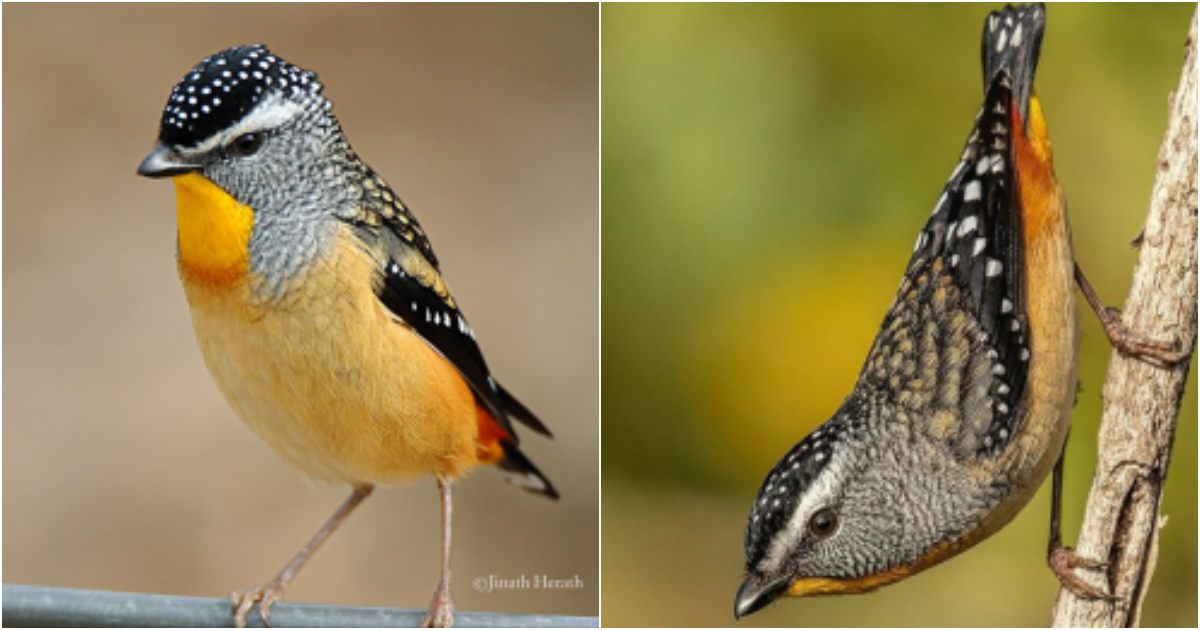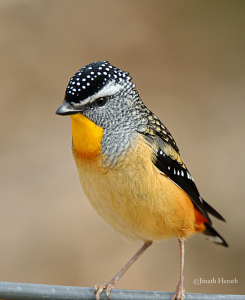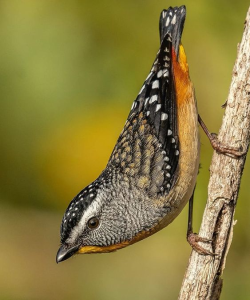Discover the Delightful Spotted Pardalote – A Charming Resident of Backyards Appearance

Appearance:
Meet the Spotted Pardalote, a diminutive bird often found high up in the eucalypt canopy, making its presence known through its distinct call. The male boasts a striking black coloration on its wings, tail, and head, adorned with a pattern of small, white spots. With a pale eyebrow, yellow throat, and a vibrant red rump, the male is a true sight to behold. Females share a similar appearance but with less prominent markings.

Similar Species:
Distinguishing the Spotted Pardalote from its relative, the Striated Pardalote (P. striatus), is easy. The Striated Pardalote features a striped head instead of spots, lacks wing markings, and has a plainer back.
Habitat and Distribution:
You can find the Spotted Pardalote in eastern and southern regions of Australia, stretching from Cooktown in Queensland to Perth in Western Australia. While it primarily inhabits eucalypt forests and woodlands, it also frequents parks and gardens with well-established eucalypt canopies. Coastal areas and the western slopes of the Great Dividing Range provide a suitable habitat.
Feeding Habits:
The Spotted Pardalote diligently searches for insects, particularly psyllids, on tree foliage. It also indulges in the sugary exudates found on leaves and psyllids, making it a versatile forager.
Breeding:
The Spotted Pardalote constructs its nest at the end of a narrow tunnel, which it excavates in an earth bank. Occasionally, they may utilize tree hollows or even artificial structures for nesting. Both parents actively participate in nest-building, incubation of the eggs, and the feeding of the hatchlings.
Adapting to Urban Environments:
Despite its diminutive size, the Spotted Pardalote remains a common visitor in urban areas with a dense population of eucalypt trees. Surprisingly, nests have been discovered in unconventional locations such as carpet rolls and garage roll-a-doors, showcasing their adaptability to human-made structures.
Embrace the presence of the delightful Spotted Pardalote, adding a touch of natural beauty to your backyard.








